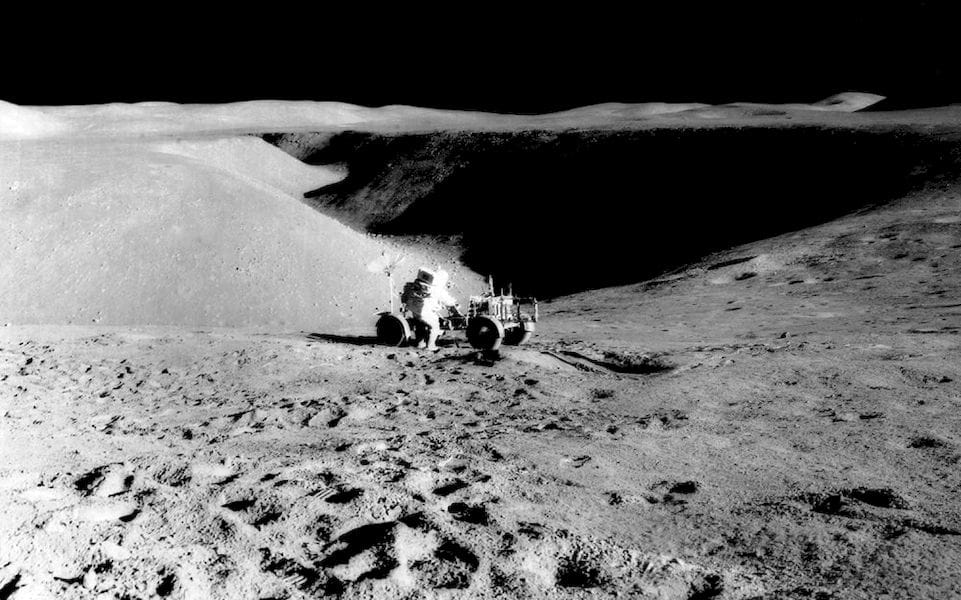
I bumped into some ready-to-3D print 3D models of the lunar surface.
Published by Jacob A. Richardson, Planetary Volcanologist (one of the best job titles I’ve seen in quite a while), the models are of all the Apollo landing sites and a couple of other notable locations.
Richardson, who works at the NASA Goddard Space Flight Center, maintains a GitHub site where he publishes code (in Python), but also some very interesting 3D models. One of his works is “dtm2obj”, which accepts as input a digital terrain model and outputs a .OBJ 3D model, which, with some verification, could potentially be 3D printed.
It’s with this tool I believe he’s created the lunar landscape 3D models that appear on his repository.
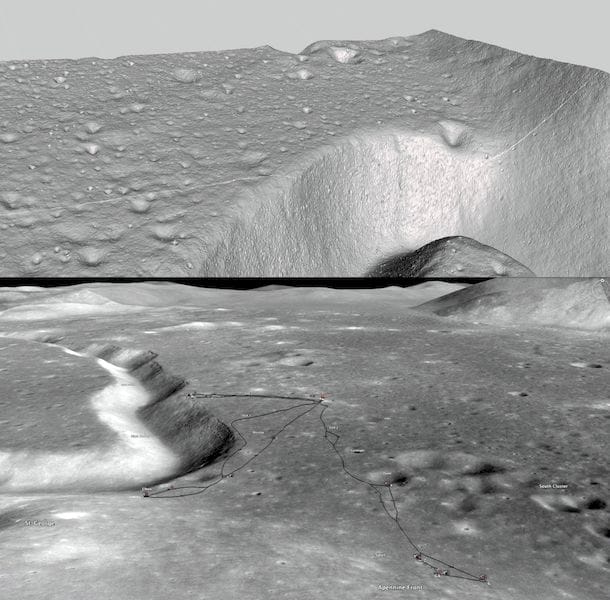
The collection of 3D models includes square sections of the six landing sites, and an expanded regional view of the Apollo 17 site, which as you will see is notably different than the other landing sites: it is in a heavily mountainous region, making me wonder how those pilots in 1972 managed to land successfully.
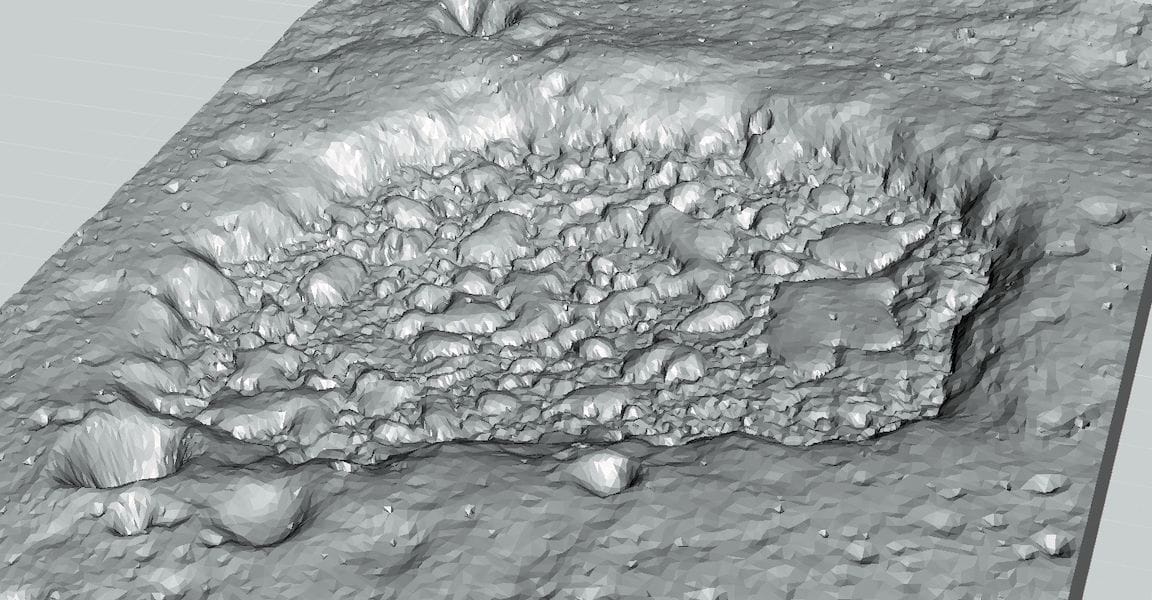
Three other non-Apollo 3D models are included in the collection. One is the irregular mare patch “Ina D”, which includes a pretty crazy surface that must have been created in a very unusual geological moment.
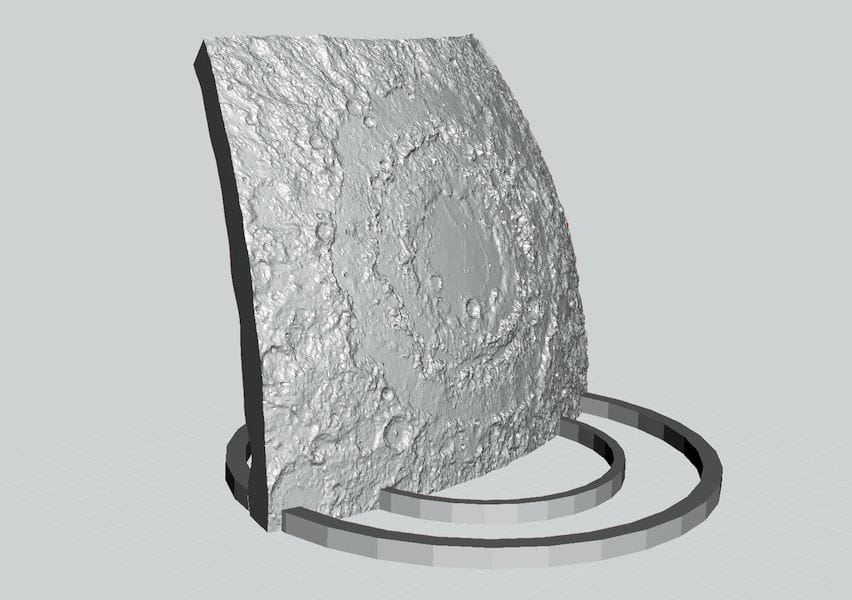
Another is Mare Orientale, one of the largest basins on the lunar surface. This feature is so large that it is printed in a curved fashion to match it’s actual shape as it extends from the lunar equator southward. Conveniently it is modeled with a fun circular base.
Each of these 3D models include “vertical exaggeration”, something often done with landscapes to emphasis surface features. While they do render the models a bit unrealistic, it’s easy to squish them back to their true shapes with a 3D CAD system.

Just be prepared for a disappointing 3D print on some of the models, as the early Apollo missions clearly selected the flattest possible locations to maximize the probability of landing survival. Apollo 11, for example, actually looks like this, courtesy of Google Moon:
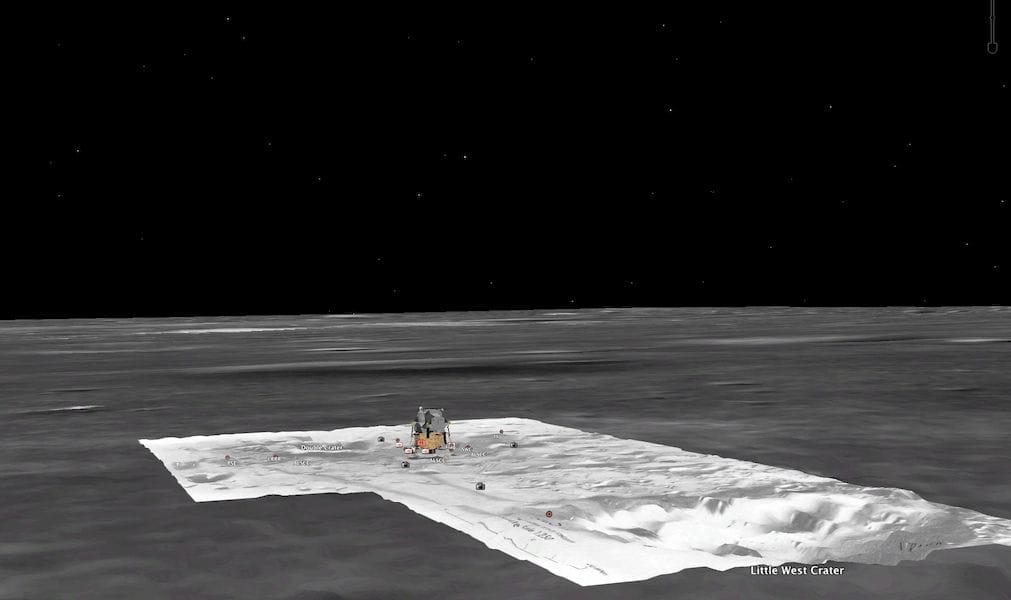
Meanwhile, the higher numbered missions get into more interesting lunar territory. Here we see the 3D model for the Apollo 15 mission, which landed right beside one of the mysterious lunar “rilles”, gigantic long trenches.
The 3D model of this region is impressive.
But so was the actual view when visited by astronauts.
Maybe someday we will visit there again, instead of merely 3D printing this location.

